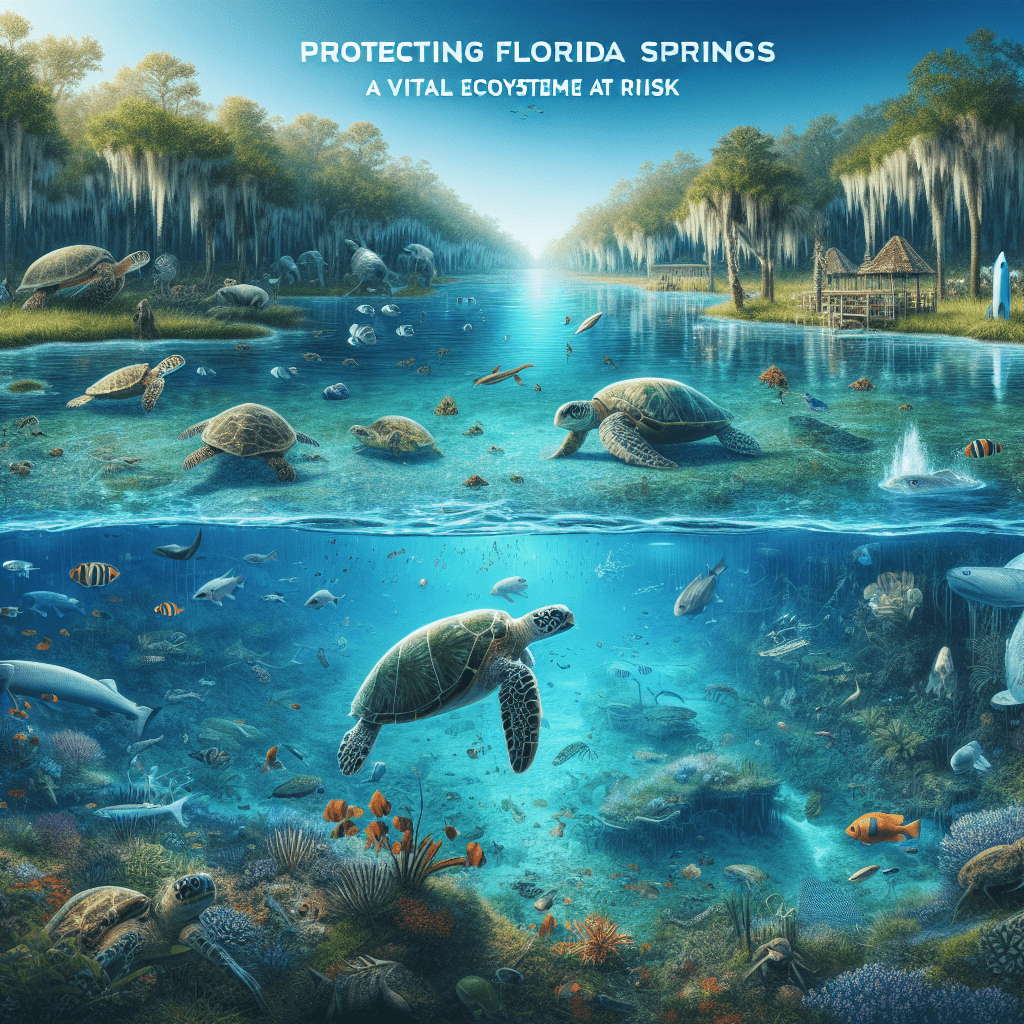With its crystal-clear waters and diverse ecosystems, Florida’s springs are some of the most breathtaking and unique natural wonders in the state. However, these springs are at risk due to pollution, overuse, and other human activities. In this article, we will explore the importance of protecting Florida springs, the threats they face, and what we can do to preserve them for future generations.
Why Protecting Florida Springs is Essential
Florida’s springs are not just beautiful to look at – they also serve as vital ecosystems that support a wide variety of plant and animal species. These springs provide a source of clean water for both wildlife and humans, while also offering recreational opportunities such as swimming, snorkeling, and kayaking. Additionally, many springs have cultural and historical significance to the indigenous peoples of Florida.
The Threats Facing Florida Springs
Despite their importance, Florida springs are facing a number of threats that jeopardize their health and sustainability. Some of the key issues include:
- Water Pollution: Runoff from agricultural activities, septic systems, and urban development can introduce harmful chemicals and nutrients into the water, leading to algae blooms and reduced water quality.
- Overpumping: The excessive withdrawal of groundwater for irrigation, drinking water, and other uses can reduce the flow of water into springs, causing them to dry up or lose their natural flow.
- Invasive Species: Non-native plants and animals can disrupt the natural balance of Florida springs, outcompeting native species and altering the ecosystem.
Ways to Protect Florida Springs
Given the importance of Florida springs and the threats they face, it is essential that we take action to protect and preserve these valuable ecosystems. Some of the ways we can help include:
- Reducing Pollution: Implementing best management practices for agriculture, upgrading septic systems, and limiting the use of fertilizers and pesticides can help reduce pollution in Florida springs.
- Conserving Water: Using water more efficiently at home, fixing leaks, and supporting water conservation programs can help reduce the strain on Florida’s aquifers and protect spring flows.
- Removing Invasive Species: Participating in invasive species removal projects and planting native vegetation can help restore the balance of Florida springs and protect native species.
Conclusion
Florida springs are a vital part of the state’s natural heritage, providing clean water, recreational opportunities, and habitat for wildlife. However, these precious ecosystems are under threat from pollution, overuse, and invasive species. By taking action to reduce pollution, conserve water, and remove invasive species, we can help protect Florida springs for future generations to enjoy.
FAQs
Q: How can I help protect Florida springs?
A: You can help protect Florida springs by reducing pollution, conserving water, and removing invasive species. Additionally, you can support organizations and initiatives that work to protect and preserve Florida springs.
Q: What are some recreational activities I can enjoy at Florida springs?
A: Florida springs offer a wide range of recreational activities, including swimming, snorkeling, kayaking, and picnicking. These activities allow visitors to experience the beauty and serenity of Florida’s natural springs.
TIP:
One simple way to help protect Florida springs is to always dispose of trash properly and avoid littering. By keeping our waterways clean, we can help maintain the health and beauty of Florida springs for generations to come.
#Protecting #Florida #Springs #Vital #Ecosystem #Risk

